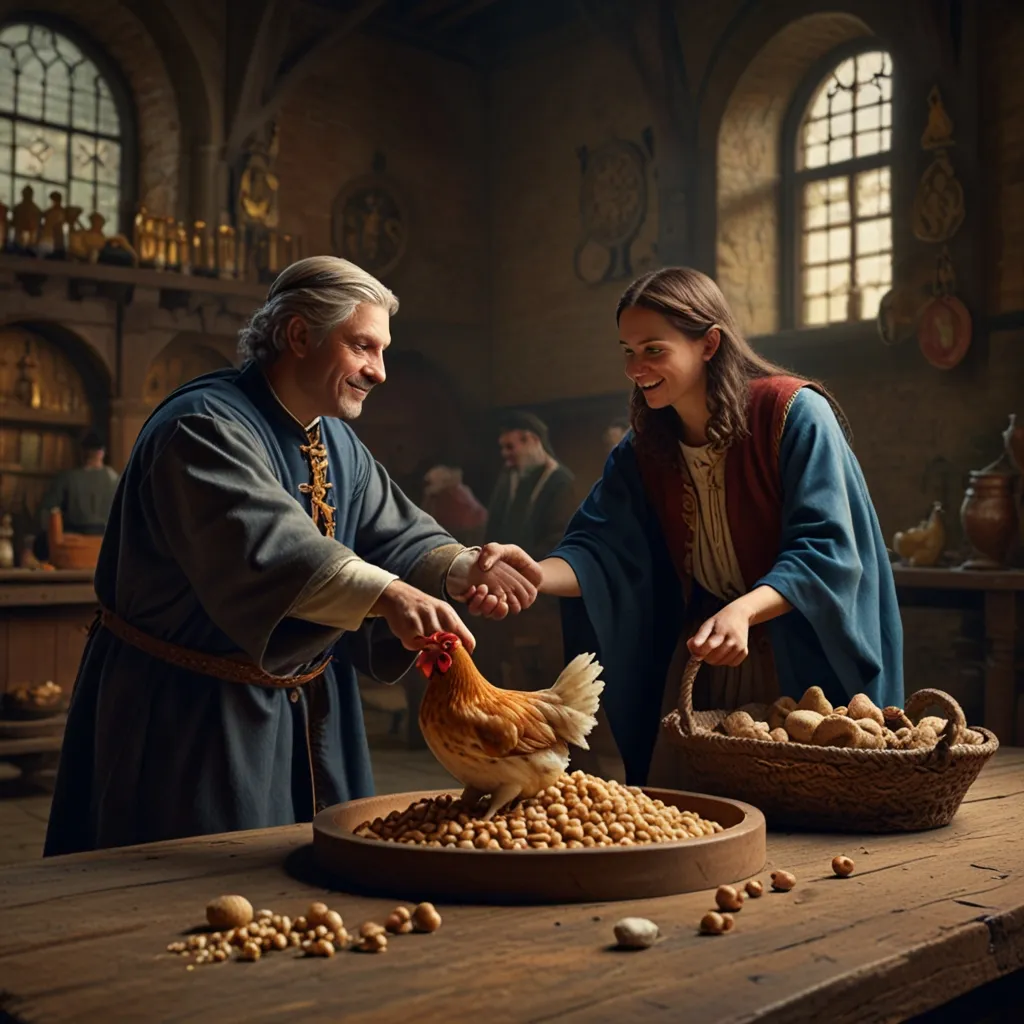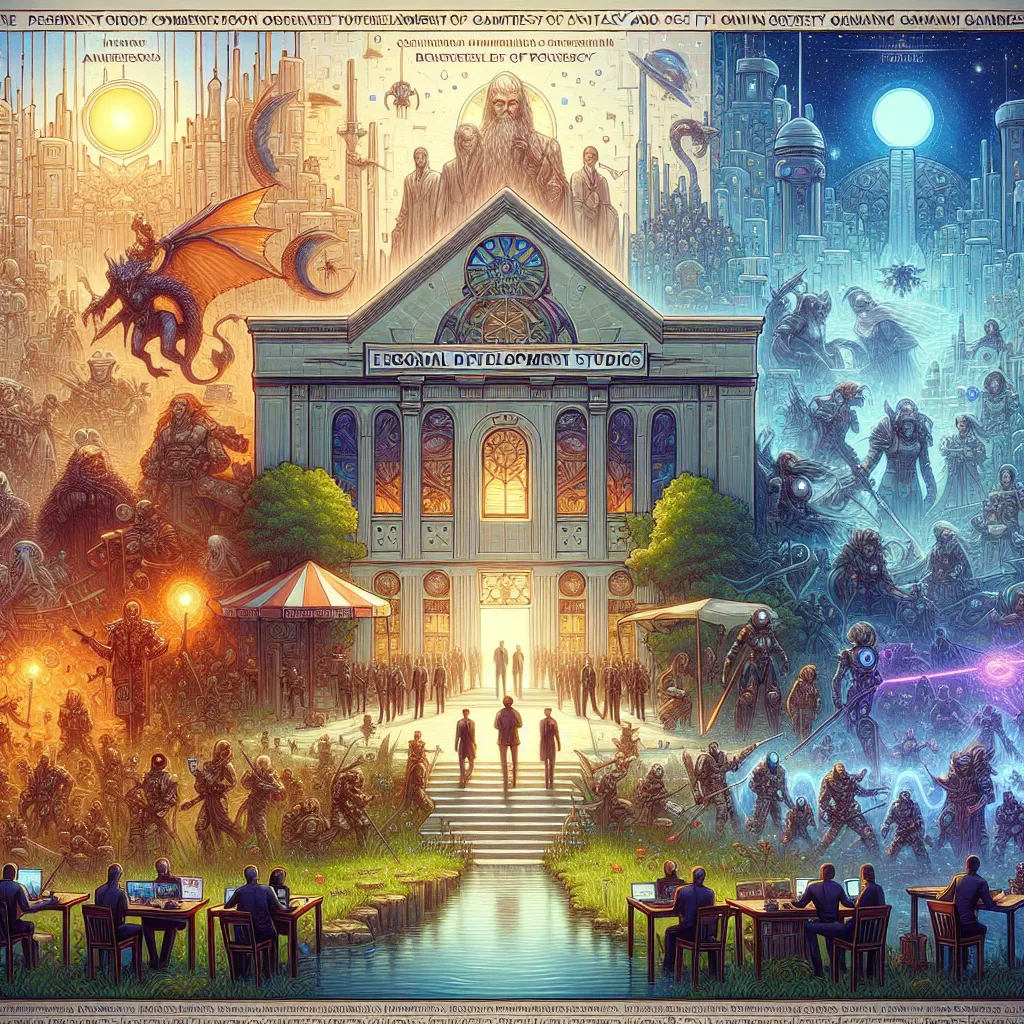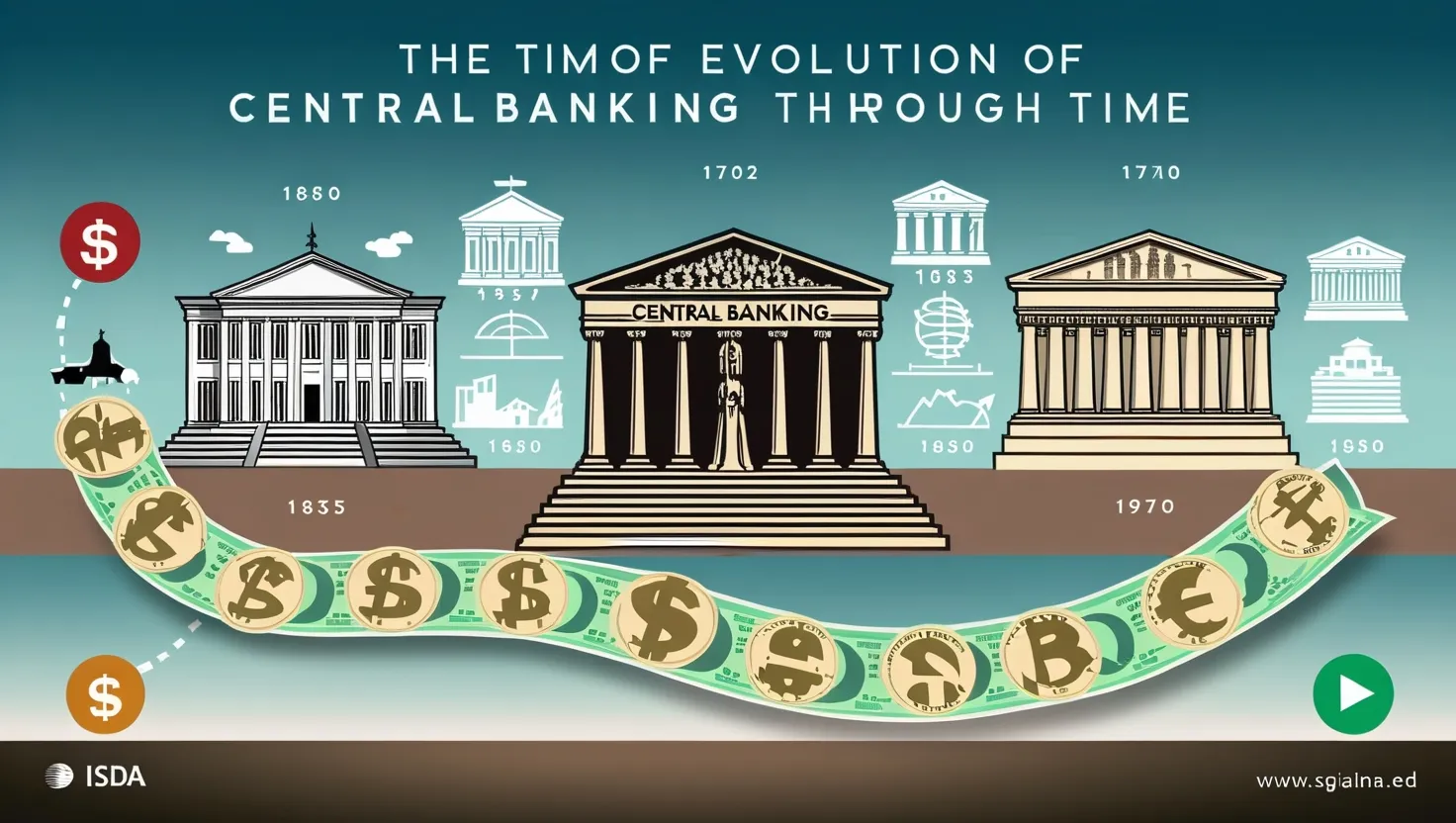Ever heard that in the olden days people just swapped their goods directly without any money? Like, you give me a chicken, and I give you some grain? Well, that’s the barter system, right? But guess what, historians and anthropologists are saying this trading method wasn’t as common as we think. The idea of the barter system, where people directly exchanged items without using money or debts, doesn’t have much historical evidence backing it up.
So why do we have this prevalent idea that bartering was the go-to system? Let’s dig into those historical archives and see what’s really up with how people swapped goods back in the day.
Alright, so most folks think bartering went something like this: imagine two medieval farmers, we’ll call them Todd and Joe. Todd’s got a few extra chickens but needs more grain, while Joe’s got plenty of grain but not enough chickens. So, Todd asks Joe for some grain in exchange for a few chickens, Joe agrees, and bam, that’s a barter deal!
Sounds simple, right? But think about it—how practical is this? How often would two people just happen to have exactly what the other person needs in exactly the right quantities? Assigning value to different items would be super subjective. One person could easily feel they’re getting the short end of the stick, and there’s no mediator to step in. This system would probably lead to more arguments than successful trades. In reality, these kinds of direct exchanges were pretty rare.
So, why do we cling to this barter system myth? It pretty much kicked off with Adam Smith, the famous economist. Writing three centuries ago, Smith threw this idea out there without much archaeological evidence. But his theories were super popular and just stuck around. And then there’s the assumption that money developed from bartering, but historians typically think money actually came from the concept of debt.
Early societies didn’t really revolve around swapping commodities. Instead, they were big into the exchange of gifts and favors. If someone needed something, they typically got it for free but with an unspoken understanding they’d return the favor eventually. This wasn’t about scarcity; it was about obligations. Religion and societal norms enforced this system. People would give back through labor, hunting, or even joining military expeditions. Giving back brought good karma, kept the gods happy, and built trust.
This trust-based system was more efficient and helped local communities grow stronger. People exchanged what they needed and returned favors rather than exact goods. This helped avoid disputes and build tight-knit communities.
Physical bartering did happen, but it was more common among strangers, and even then, it was more about goodwill than strict value exchange. Local communities thrived on these reciprocal relationships rather than direct trades.
Now about debt and money. With the rise of states and empires, things got complicated. The personalized barter systems fell apart, and a system of debt took over. Rulers extracted wealth from conquered people by instilling debt, making them repay through tribute or labor. This new system didn’t rely on trust but on fear and strict rules, consolidating power through enforced debt. As empires grew, money emerged from these debt systems. Coins further standardized this economic control.
Interestingly, even with the advent of coins, people mostly still bartered favors inside their communities. Coins were mainly used for tributes to temples or rulers, not everyday trade. The new money system wasn’t just about trade but about power and control.
And it didn’t stop there. Money systems likely reinforced gender inequalities. In pre-money societies, women often controlled the exchange of goods and allocations. As money-based commerce spread, women’s rights tended to diminish. Early societies without money saw women playing more central roles in trade and exchanges.
So, looking back, early societies functioned very differently. Today, we exchange goods and services mostly out of self-interest, which makes sense in our globalized world. But history shows us that humans weren’t always this self-centered. Communities often looked out for each other through systems based on trust and goodwill. It was the imperialist expansions and subjugations that pushed people into debt and monetary systems.
While older barter systems based on favors wouldn’t work today, the introduction of debt and money eventually led to more complex societies and modern economies. Still, it’s fascinating to remember that not too long ago, trust and goodwill were the currency that kept local economies thriving.
So, next time you think about how trading evolved, keep in mind that the simple barter system we imagine isn’t quite how things actually happened. It’s a lot more interesting and complex than that!






